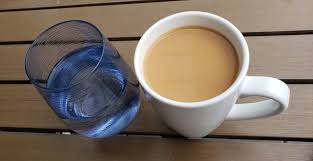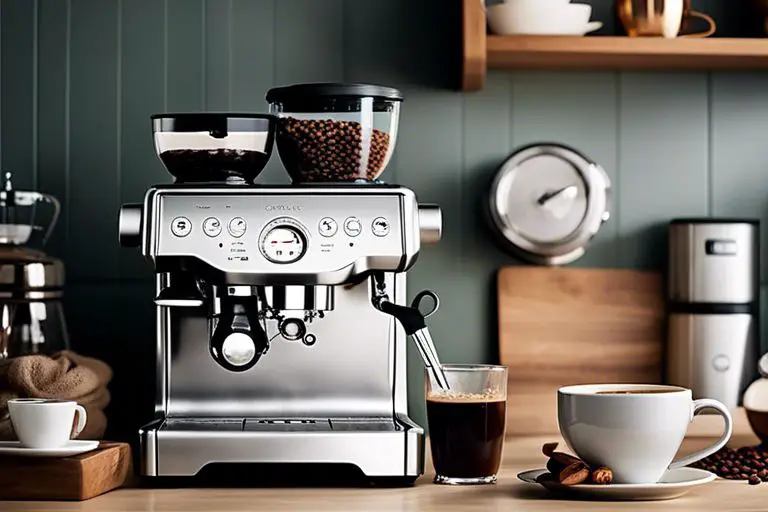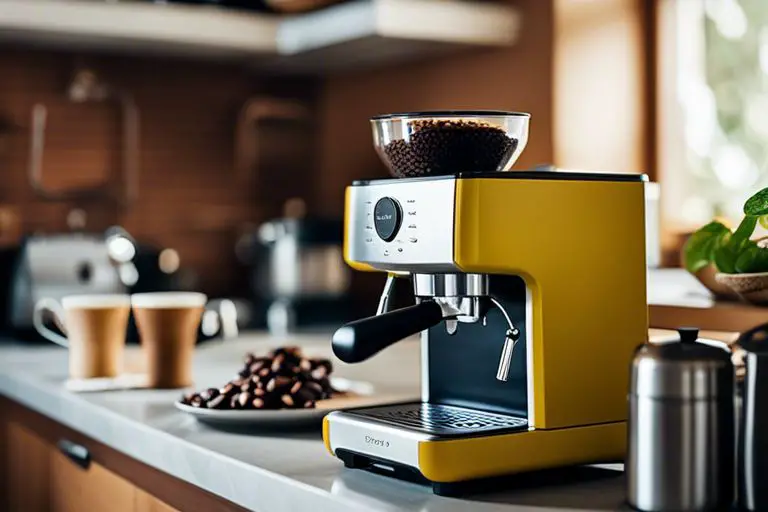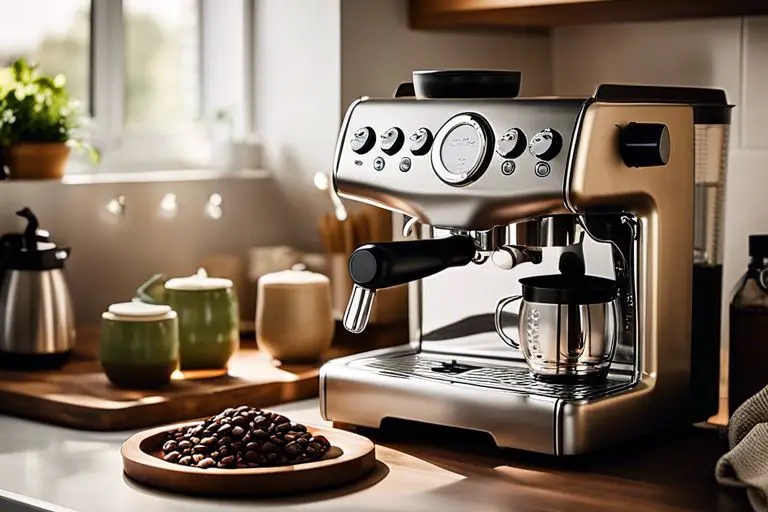If you are just throwing some ground coffee into your coffee machine, adding some water and drinking whatever comes out the other end then you are missing out on perfecting your coffee experience.
In this article we explain how to optimise your coffee ground to water ratio so that you optimise the flavour and ensure that you get the perfect cup of coffee every time.
The perfect ground coffee to water ratio is 60 grams of ground coffee to 1 litre of water.
That’s just a starting point though. You can tweak it to suit your own individual taste.
To understand why you should use a specific amount of coffee for every 1 litre of water lets discuss some of the other methods and why you should just keep it simple.
To be clear, the brewing methods we are discussing in this article to get to the correct coffee to water ratio relates mostly to using a cafetière or a filter coffee machine
How many tablespoons of coffee per cup?
A lot of coffee machines come with scoops and so it seems natural to just use one of these for every cup or if you don’t have a scoop then just use a tablespoon instead.
The problem with tablespoons or scoops is that there is no international standard in terms of size and volume.
With coffee scoops, they can literally be anything. 7 grams, 10 grams, or more or less. We would strongly recommend not using scoops to measure out the amount of coffee you use per cup.
Scoops, however, can be useful once you know how many grams of your favourite coffee they actually hold.
So using our guide of 60 grams of coffee per 1 litre of water, if your scoop holds 6 grams of coffee and you want to brew 1 litre of coffee then simply add 10 scoops.
With scoops, at least you know how much they hold so you can use the golden rule of 60 grams per 1 litre of coffee and do the maths once for your scoop and away you go.
Tablespoons are a definite no when it comes to measuring out coffee to add to your coffee machine.
There are all sorts of shapes and sizes so you have no idea how many grams you are scooping up with each tablespoon and will always vary every time depending on how heaped it is when you have it on the spoon.
Don’t use a tablespoon to measure your coffee. Many sites recommend using tablespoons but it makes sense not to, right?
You will get inconsistent results and some days you will wonder why you have a great cup of coffee and other days it won’t taste so good.
If you do decide to use a scoop, once you know how much coffee each scoop contains just be aware that different coffee will be a different weight so as long as you are mostly using your favourite coffee then you’ll be fine.
If you change your coffee then just weigh out a full scoop once to check the difference from the one you normally use.
Other types of water to coffee ratios
You may hear things like 1:8 or 1:12. First of all, it’s not that easy to decipher what that actually means!
1:8, for example, means one part coffee to eight parts water which basically means if you know how much coffee you have then you can multiply that by 8 and get the amount of water you need.
We like to think about the reality of what you are trying to do rather than science.
You don’t start with an amount of coffee and then add water to accommodate the amount of coffee you have. It’s basically the other way around.
Who wants to do that kind of maths in the morning? You want to add the coffee and add the water and hit the button to deliver the coffee.
It depends how you like your coffee
The 60 grams per 1 litre is just a starting point. It’s going to work for a lot of people because that will give you a medium to strong cup of coffee.
The secret to great coffee is to do the same thing every time. Once you work out what works best for you, just do that every time.
If you like a stronger coffee then change it to 70 grams per 1 litre and if you like it a little milder then reduce it to 55 grams per litre.
Just play around with it and you will be surprised how much of a difference it makes to the overall flavour. Once you find the sweet spot for your palette then you have cracked it.
How many grams of coffee for 2 cups of coffee?
The average cup size in the UK holds about 200ml of liquid but in the UK we also like a nice mug of coffee that can hold maybe 250ml or more.
The reason that 60 grams of coffee per litre works so well as a measurement is that it is easily divided down for cups.
If your cup holds 250ml of liquid and you want 2 cups that’s 500ml which is half a litre.
For 2 cups its 30 grams of coffee. For 4 cups its 60 grams of coffee and for 8 cups its 120 grams of coffee
No complicated charts or maths, just use what’s above in bold.
This is as far as you need to go if you are trying to determine how much coffee to add to get a set number of cups but if like me you are a little OCD (Obsessive Coffee Disorder) then you can get a little more technical if you want to perfect the flavour even more.
Coffee extraction is important
The amount of coffee that ends up in your cup can be up to about 20% of the whole coffee beans that you grind before brewing because that is the roughly how much of the coffee grounds are able to dissolve into the water. The rest is what you end up throwing away after brewing.
Just as important as adding the correct amount of coffee in the first place is the preparation of the coffee to start with.
If your coffee is too coarsely ground then the water will seep through the coffee grounds too quickly and the result will be a watery and weak coffee.
You may be sat there thinking that you added the correct amount of water and the correct amount of coffee but it’s too weak and watery.
If that happens, your first port of call is to grind your coffee a bit finer so that it takes the water longer to penetrate through the coffee and into the jug or cup below.
For filter coffee machines its best to choose one that has showerhead technology so that it sprays the water evenly over the coffee instead of just pouring water over one section.
Here is a detailed article on how to choose the best filter coffee machine to get a perfect cup of coffee.
Percolate or Infuse?
Percolating your coffee is when water gets goes through the coffee and into the jug or cup
Infusing your coffee is when the coffee is mixed with water for an extended period of time
Filter coffee machines brew with the percolate method (the water passes through the coffee)
Cafetière’s brew with the infusion method (water mixes with the coffee for an extended period of time)
If you use infusion (cafetière) try using a little more coffee than you would if you percolate (filter coffee machine)
The reason for this is that around 10% of the water is retained in the coffee grounds when you use the percolate method so you get a slightly stronger coffee because less of the water you use is converted into the liquid in your cup
If you use a cafetière almost all of the water is used so the coffee will be weaker than if you use a filter coffee machine.
Hopefully that makes sense. For further clarity this is explained toward the end of the below video explaining coffee brew ratio’s
Using a cafetière is one of the cheapest ways to brew a great cup of coffee. Here are some of the best value for money cafetière’s to consider.




